SOURCE: RAUNAK KUNDE / NEWS BEAT / IDRW.ORG

The Indian Ministry of Defence (MoD) is actively working towards establishing India as a prominent weapons exporter in the global defence sector. While the country has achieved significant success in recent years, it still holds a relatively small share of the market. In a strategic shift, the MoD is now focused on exporting weapons systems that offer higher value, including domestically-developed warships for the Indian Navy.
Recognizing the challenges posed by long delivery timelines from Indian Public Sector Undertakings (PSUs), the MoD has been encouraging private-sector shipyards to enter the shipbuilding segment, which has traditionally been dominated by government-owned companies. The ministry is keen on addressing the issue of delayed deliveries and aims to enhance the competitiveness of Indian shipyards in the tender process.
Continue readingSOURCE: RAUNAK KUNDE / NEWS BEAT / IDRW.ORG

Egypt, one of the leading importers of Russian weapons, is actively exploring alternatives to reduce its dependency on Russian-made weaponry. With India and China emerging as potential options, Egypt is keen to seek support from India to maintain and supplement its existing arsenal of Russian-origin weapons systems.
Currently ranked among the top three importers of Russian weapons, Egypt holds 9.3 percent of the market share, following India and China. However, the country aims to diversify its sources and explore partnerships with nations that possess significant expertise in weapons manufacturing and have developed indigenous substitutes for Russian systems.
Continue readingSOURCE: RAUNAK KUNDE / NEWS BEAT / IDRW.ORG
India has made a formal request to the United States of America, urging the inclusion of Lockheed Martin’s AGM-MR (Medium-Range) missiles on its fleet of MQ9B drones. The AGM-MR missile, currently in the developmental phase, offers double the range of the AGM-114 Hellfire missiles commonly equipped on MQ9B UAVs.
With increased stand-off range becoming a critical factor in operating in contested areas, the Indian Air Force (IAF) has expressed its interest in adopting the JAGM-MR missiles. This development opens up possibilities for increased capabilities not only for the Indian drone fleet but also for the IAF’s Apache helicopters.
Continue readingSOURCE: RAUNAK KUNDE / NEWS BEAT / IDRW.ORG
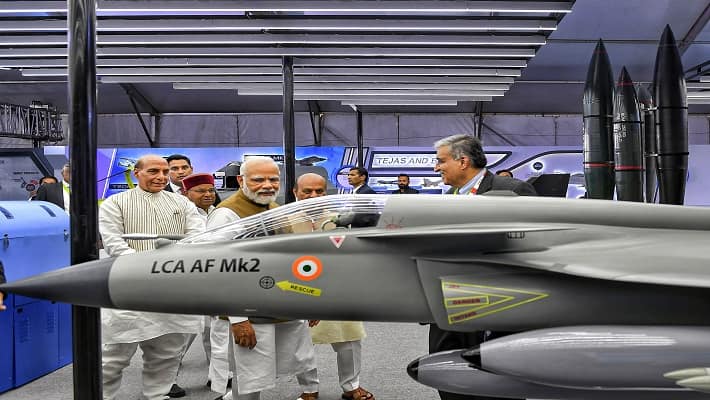
In a bid to reduce dependency on foreign equipment manufacturers, the Aeronautical Development Agency (ADA) of India recently issued a Request for Information (RFI) for the development of an indigenously built Air-to-Air Refueling Probe.
This move has garnered interest from two Indian private-sector firms. The ADA aims to enhance the self-reliance of India’s defence industry by relying on domestic manufacturers, thereby strengthening the country’s aerospace capabilities.
Continue readingSOURCE: RAUNAK KUNDE / NEWS BEAT / IDRW.ORG
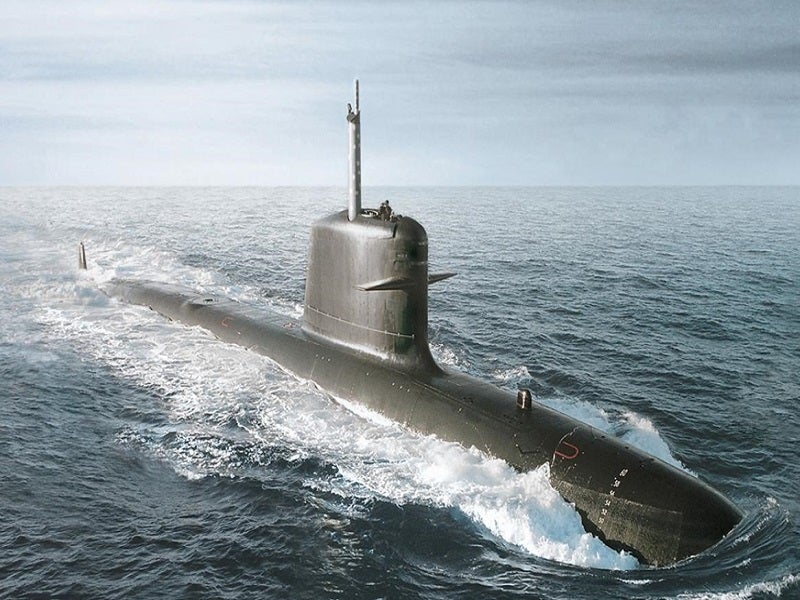
India’s Defense Research and Development Organization (DRDO) has awarded a contract to Larsen & Toubro (L&T), a leading private sector company, for the manufacturing of two fuel cell-based Air Independent Propulsion (AIP) System Modules. These modules are designed to enhance the capabilities of the Kalvari Class submarines in the Indian Navy.
The AIP technology has been developed and demonstrated by the Naval Materials Research Laboratory (NMRL) under the DRDO. In addition, the Ministry of Defence plans to undertake the indigenous development of a 500KWh Lithium-Ion Battery (LIB) System for submarines, which will replace the existing Lead-Acid Batteries (LAB) in the Kalvari fleet.
Continue readingSOURCE: RAUNAK KUNDE / NEWS BEAT / IDRW.ORG
India’s journey towards developing an indigenous unmanned air vehicle (UAV) program has encountered its fair share of challenges over the past two decades. However, recent developments indicate a turning point, as the country makes significant strides in its UAV capabilities. With the introduction of programs like MALE Tapas and Archer-Ng, and plans to develop High-Altitude, Long-Endurance (HALE) class UAVs, India is poised to make substantial progress with the support of American defence contractor General Atomics.
India’s decision to procure 31 MQ-9B SeaGuardian UAVs from General Atomics Aeronautical Systems (GA-ASI) marks a significant milestone in the country’s UAV program. The establishment of Maintenance, Repair, and Overhaul (MRO) facilities, coupled with collaborations with Indian private sector companies like Kalyani, showcases India’s commitment to local manufacturing and self-reliance in the UAV domain. This move will not only strengthen India’s defence capabilities but also foster technological advancements within the country.
Continue readingSOURCE: RAUNAK KUNDE / NEWS BEAT / IDRW.ORG
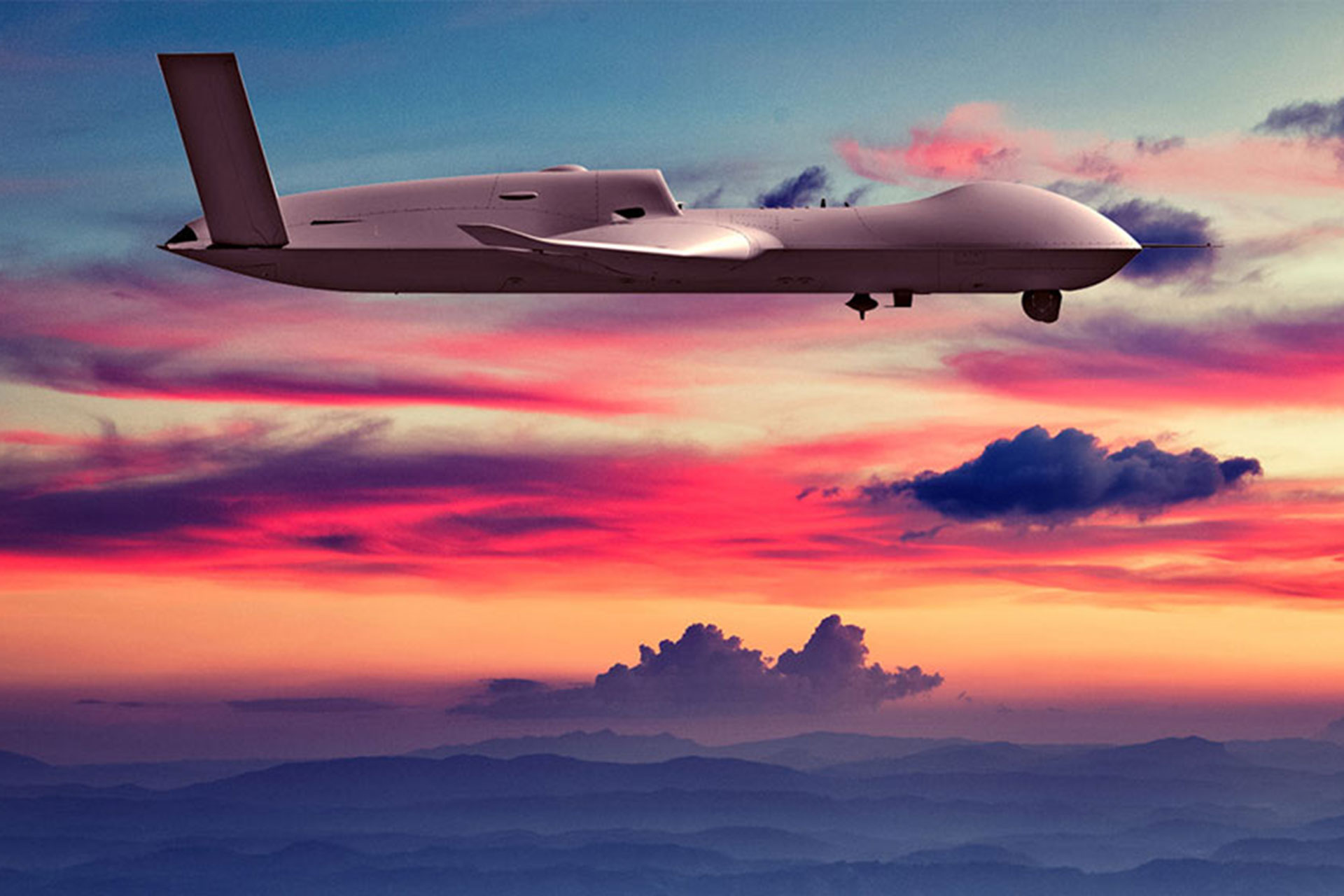
India’s pursuit of stealth unmanned combat aerial vehicles (UCAVs) has faced obstacles in recent years, particularly concerning the acquisition of US-made Predator C “Avenger” drones. Despite India’s interest in purchasing these advanced drones, concerns from the Missile Technology Control Regime (MTCR) and the US Congress have posed challenges to the sale.
However, recent developments, such as the procurement of MQ-9B SeaGuardian UAVs from General Atomics Aeronautical Systems, may change India’s stance on acquiring stealth UCAVs, signaling a potential shift in its capabilities and strategic priorities.
Continue readingSOURCE: RAUNAK KUNDE / NEWS BEAT / IDRW.ORG
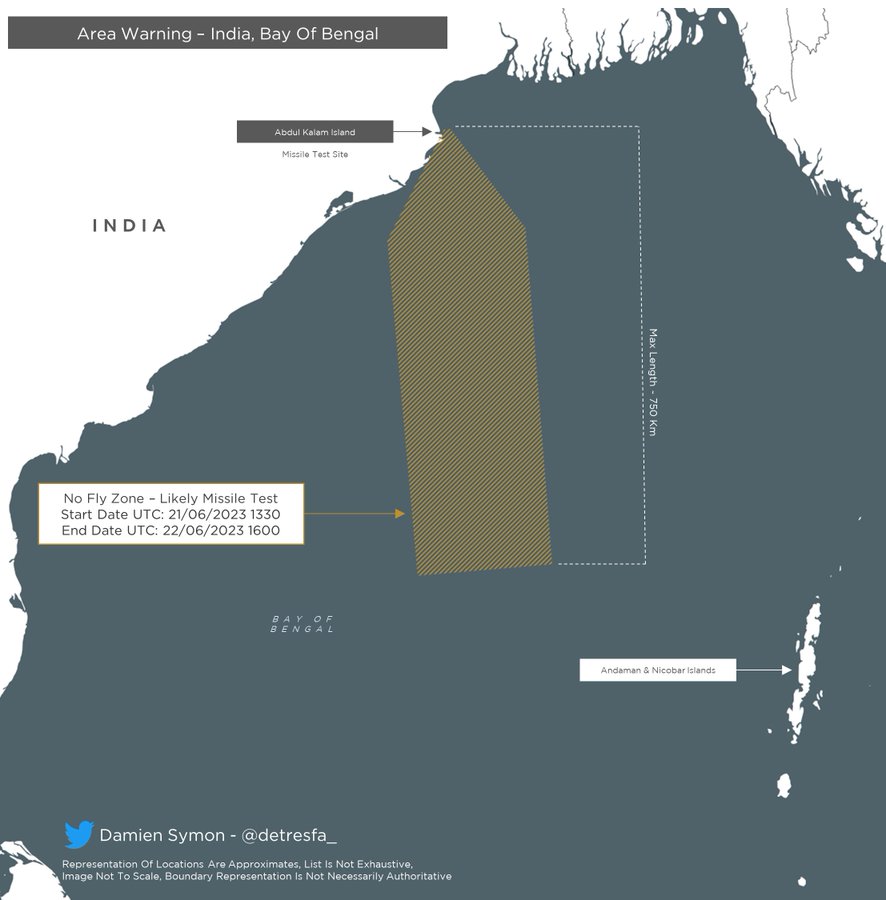
India has issued Revised Notices to Airmen (NOTAM) for a launch of a missile in the Bay of Bengal for the period from 01-02 July. Original NOTAM was issued for 21-22 June 2023 as per information provided by Twitter user Damien Symon@detresfa_.
The designated area for the NOTAM is 750km in length which indicates it might be a test of the Agni-I from Abdul Kalam Island.
Continue readingSOURCE: RAUNAK KUNDE / NEWS BEAT / IDRW.ORG
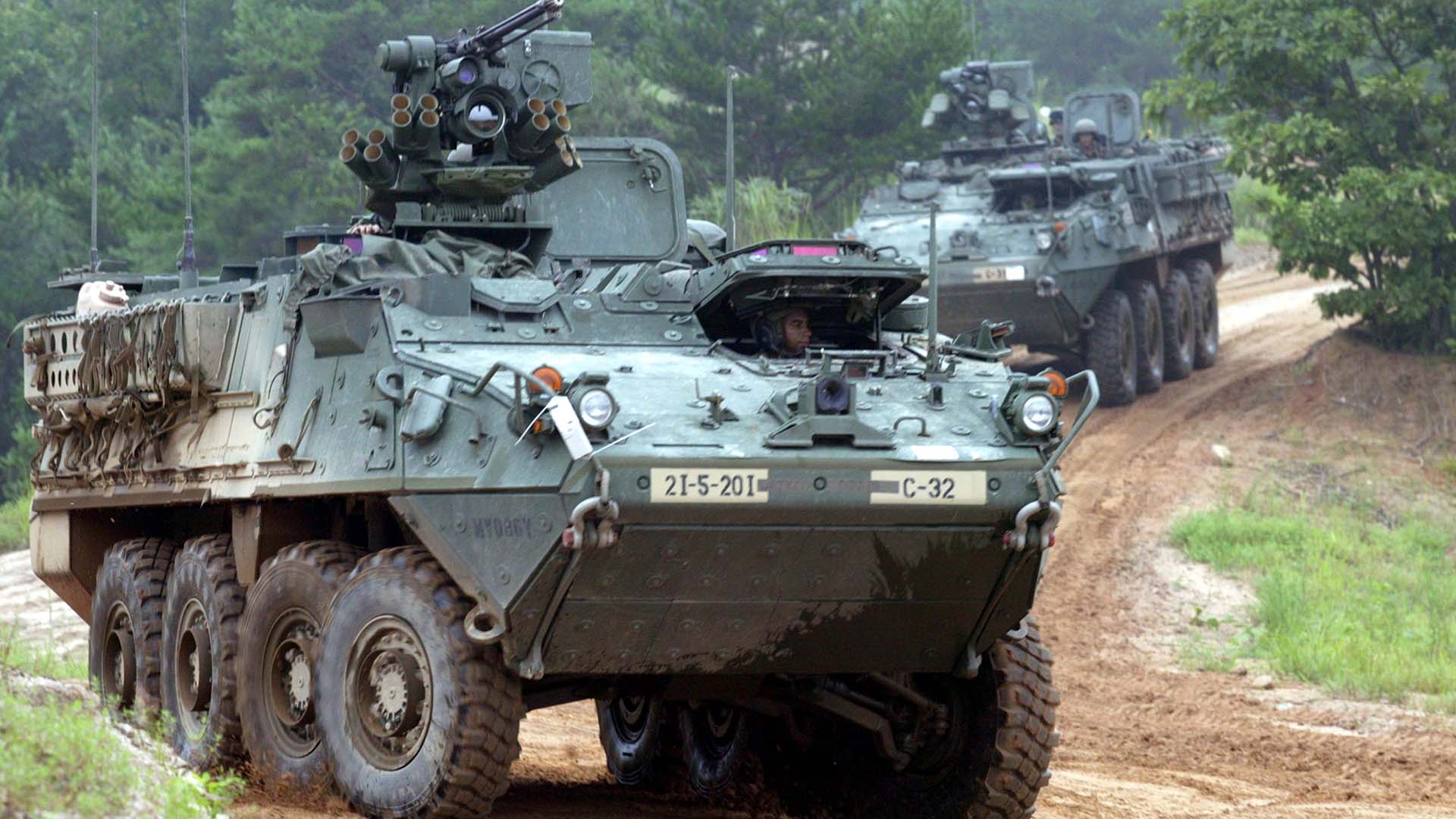
The Indian Army, as part of its Interim Armoured Vehicle (IAV) program, has expressed its endorsement for the purchase and local manufacturing of the Stryker armoured vehicle offered by the United States of America. The Army is seeking a versatile armoured vehicle that can fulfil various roles, including troop transportation, reconnaissance, combat support, and enhanced mobility.
Under the IAV program, the Indian Army aims to acquire an Armoured vehicle that possesses high mobility and flexibility to meet its diverse operational requirements. The Stryker Armoured vehicle, which has been offered by the United States, aligns with these specifications and has garnered support from the Army.
Continue readingSOURCE: RAUNAK KUNDE / NEWS BEAT / IDRW.ORG

The Indian Air Force (IAF) has expressed its endorsement for the proposal put forward by state-owned Hindustan Aeronautics Limited (HAL) and private sector companies to develop a jet-powered Unmanned Aerial Vehicle (UAV) specifically designed for Intelligence, Surveillance, and Reconnaissance (ISR) missions in high-altitude regions. Sources familiar with the matter have indicated that the IAF is on board with the program, and a request for a technical feasibility study report is expected soon.
HAL, known for its development of the Combat Air Teaming System (CATS), an indigenous unmanned and manned combat aircraft air teaming system, has presented the concept of a High-Altitude, Long-Endurance (HALE) Class UAV as part of the CATS Warrior for Loyal Wingman and strike roles. This concept has garnered attention and support from the IAF, demonstrating their interest in advancing unmanned aerial capabilities for various mission requirements.
Continue readingSOURCE: RAUNAK KUNDE / NEWS BEAT / IDRW.ORG
India is in the final stages of negotiations to secure a deal for license manufacturing of the F-414 engine in the country. The engine, to be manufactured in Bangalore by the state-owned Hindustan Aeronautics Limited (HAL), will be utilized for the Tejas MkII program. However, India is also keen on reaching an agreement for the Advanced Medium Combat Aircraft (AMCA) program, aiming to develop a new high-thrust engine capable of generating 110-120kN class of thrust.
India has been engaged in talks with several international players, including British Rolls Royce, French Safran, and American GE, for the joint development of a new engine that will be locally produced. The objective is to secure more core technology transfer as the development would largely be funded by India.
Continue readingSOURCE: RAUNAK KUNDE / NEWS BEAT / IDRW.ORG
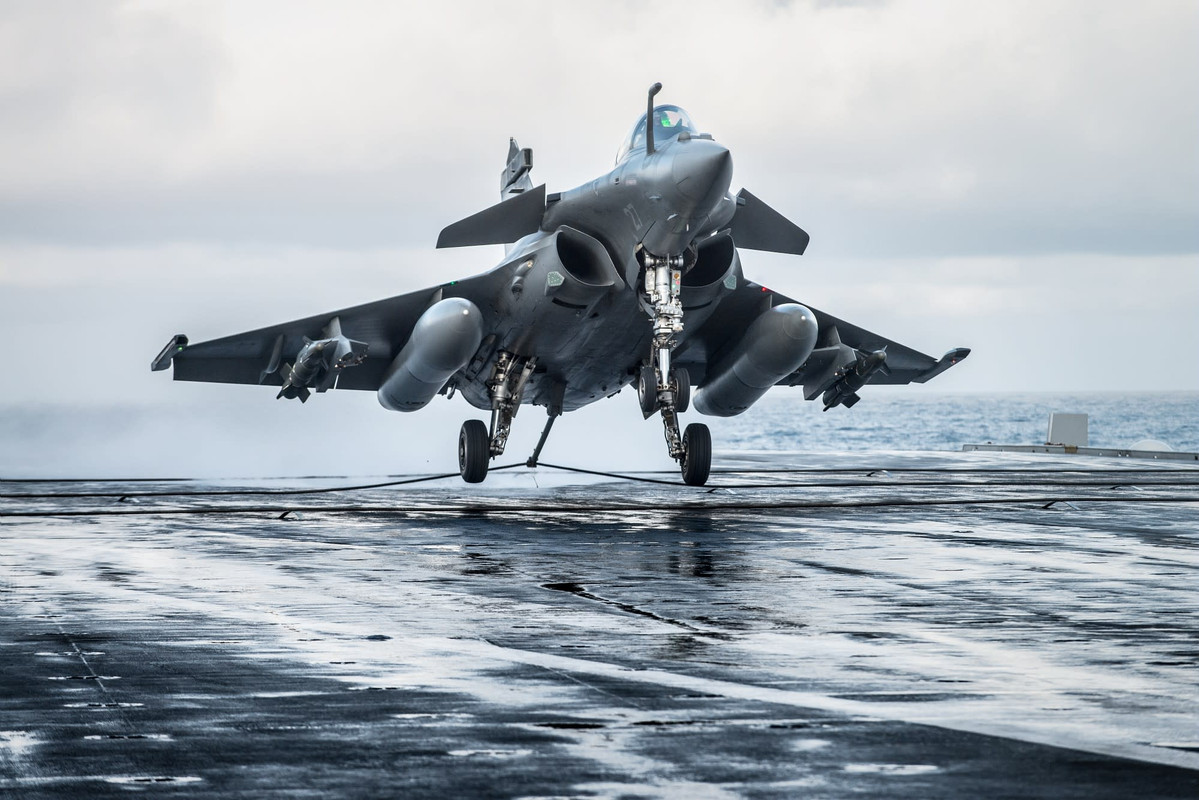
Prime Minister Narendra Modi’s upcoming visit to France on July 17, where he will be the guest of honour at the Bastille Day parade, is expected to witness a significant announcement. A multi-billion dollar deal will likely be unveiled to procure 26 Rafale Marine fighter jets for the Indian Navy.
While the exact price of the deal is yet to be revealed, sources indicate that these multi-role carrier-borne fighters will be more cost-effective compared to the ones acquired by the Indian Air Force earlier. The procurement will be conducted through a government-to-government deal, bypassing the open tender process.
Continue readingSOURCE: RAUNAK KUNDE / NEWS BEAT / IDRW.ORG

The Indian Air Force (IAF) has recently unveiled the second phase of the Mehar Baba competition, known as Mehar Baba Competition-II, which focuses on the development of swarm drones capable of automatically detecting Foreign Object Debris (FOD) on airport runways. The IAF has invited bids from Indian private sector companies to participate in this innovative project aimed at enhancing runway safety and operational efficiency.
The presence of FOD on airport platforms poses significant risks to aircraft and personnel alike. FOD can include various types and sizes of debris, such as personal belongings, tools, aircraft components, or any foreign objects that, if left unobserved and unremoved, can become hazardous within the operational area. Additionally, FOD can be forcefully propelled by jet blasts, potentially causing damage to aircraft and injuring ground personnel.
Continue readingSOURCE: RAUNAK KUNDE / NEWS BEAT / IDRW.ORG

India’s Hindustan Aeronautics Limited (HAL), a state-owned aerospace company, and French multinational aerospace and defense company Safran have successfully concluded discussions regarding a workshare agreement for the development of a new engine. This engine will power India’s upcoming 13-ton Indian Multi-Role Helicopters (IMRH) for the Indian Armed Forces. In the next few months, work on the engine is expected to commence, with the developmental phase taking place at Safran’s facility in France.
Acknowledging the importance of intellectual property rights (IPR) for India, HAL officials have confirmed that talks are ongoing to ensure India’s ownership of the engine’s IPR. This crucial aspect aims to facilitate the transfer of technology (ToT) and the local manufacturing of the engine in India without any difficulties. By securing IPR, India can exercise complete control over the design and manufacturing processes of the engine, bolstering the country’s self-reliance in defense production.
Continue readingSOURCE: RAUNAK KUNDE / NEWS BEAT / IDRW.ORG

Larsen & Toubro (L&T), a leading engineering conglomerate in India, has commenced discussions with the Indian Army regarding the procurement of a second batch of K9 Vajra self-propelled howitzers. These talks aim to secure an order for an additional 100 units of the K9 Vajra, which will be specifically designed for high-altitude operations. The K9 Vajra is a 155 mm, 52-calibre tracked artillery system that has already been successfully deployed by the Indian Army.
The initial batch of K9 Vajra howitzers, totaling 100 units, was locally assembled by L&T in India under licensing agreements with South Korea. Originally intended for deployment in the desert terrain along the western border with Pakistan, these artillery systems demonstrated their versatility during the military standoff with China after the Galwan clashes. The K9 Vajra’s adaptability to high-altitude environments prompted the Indian Army to consider procuring a specialized version for such operations.
Continue reading